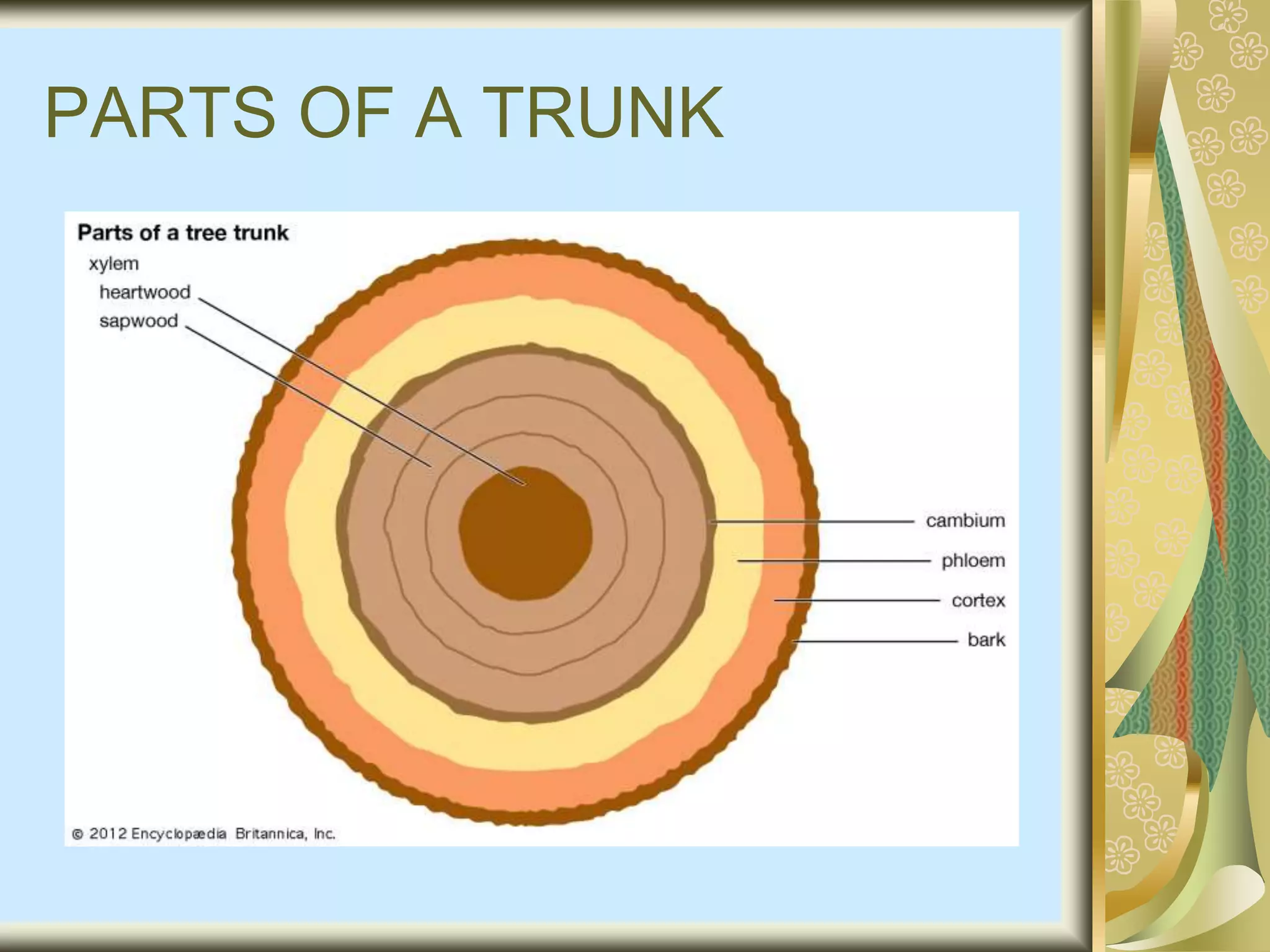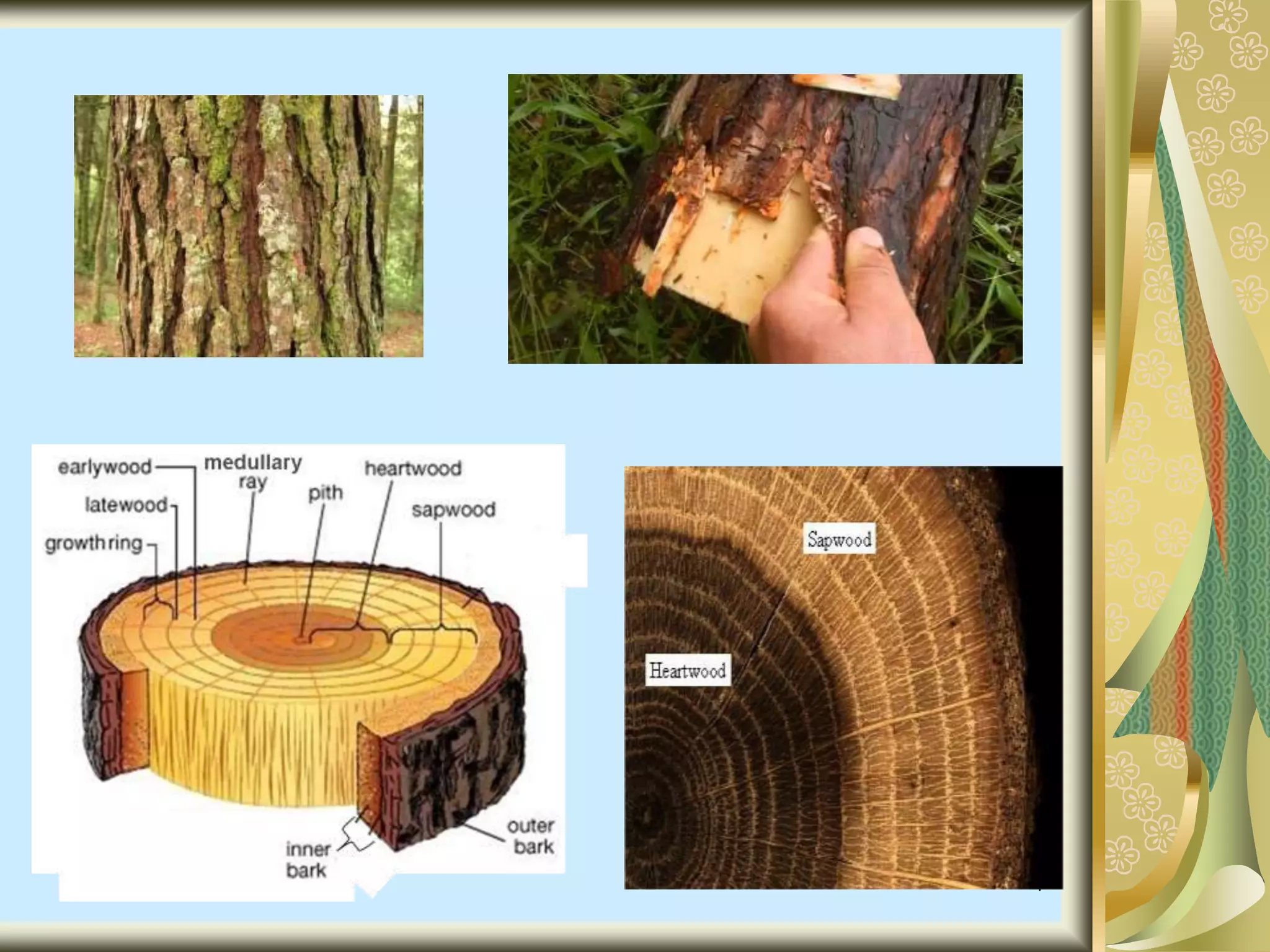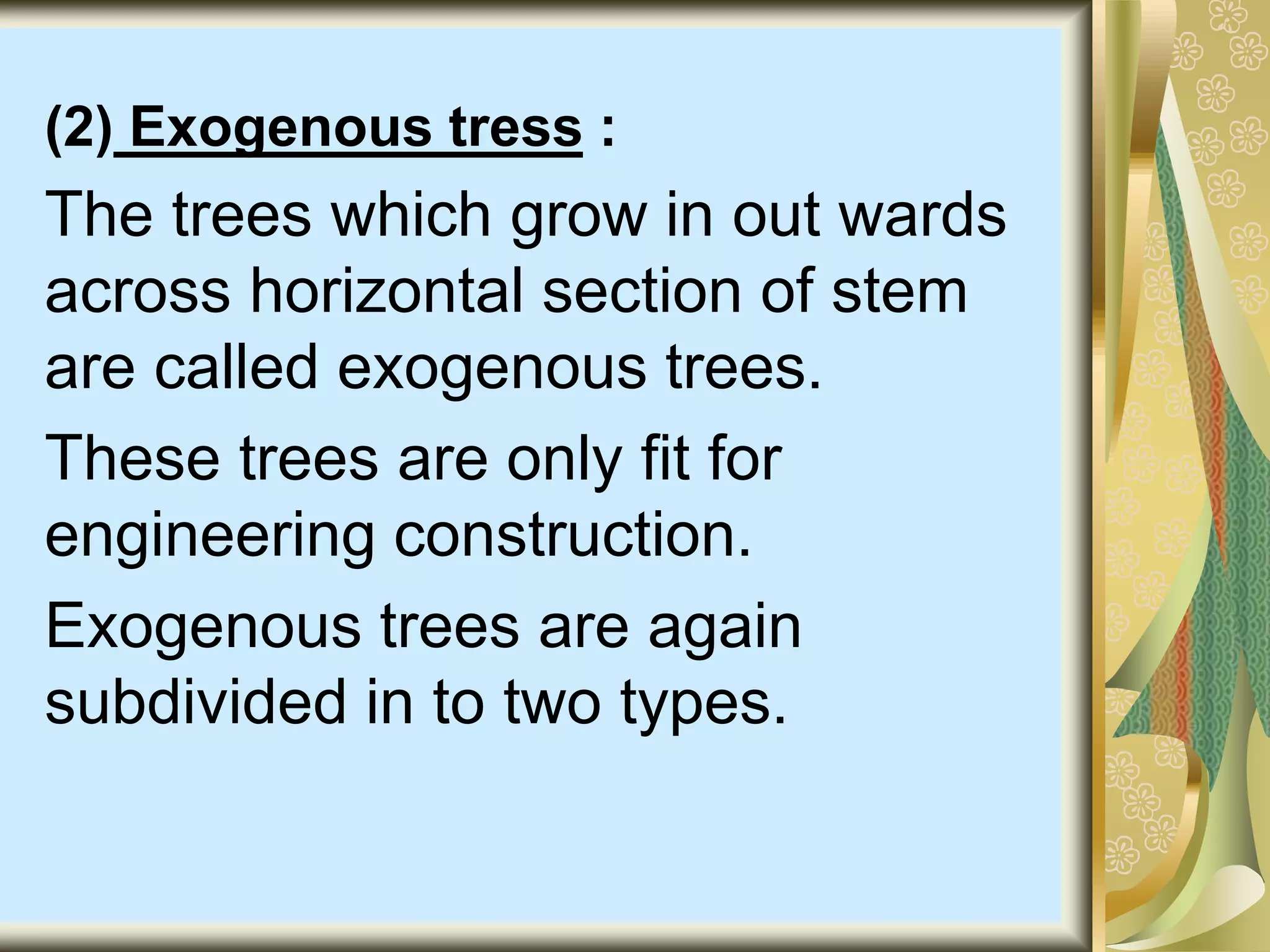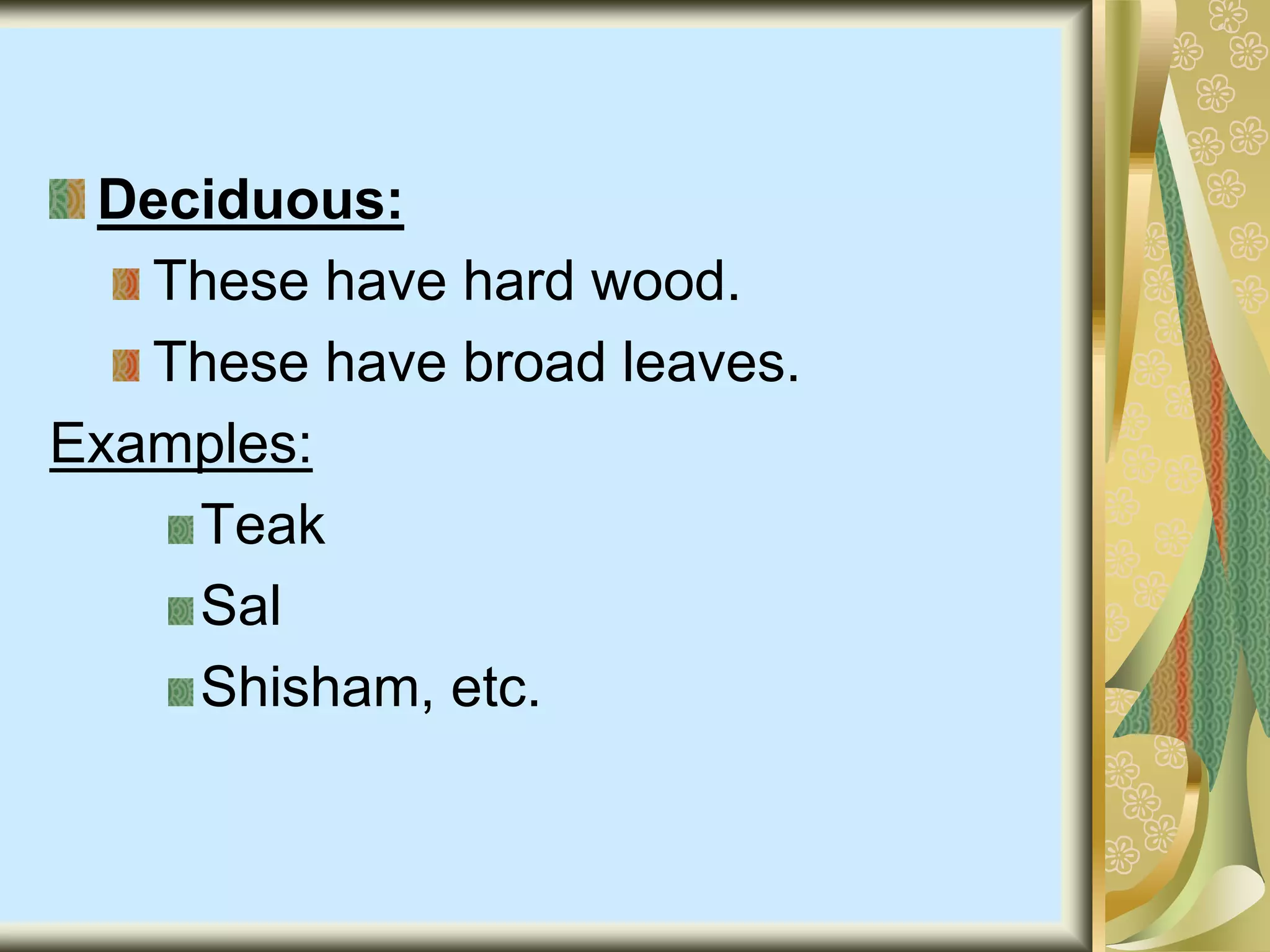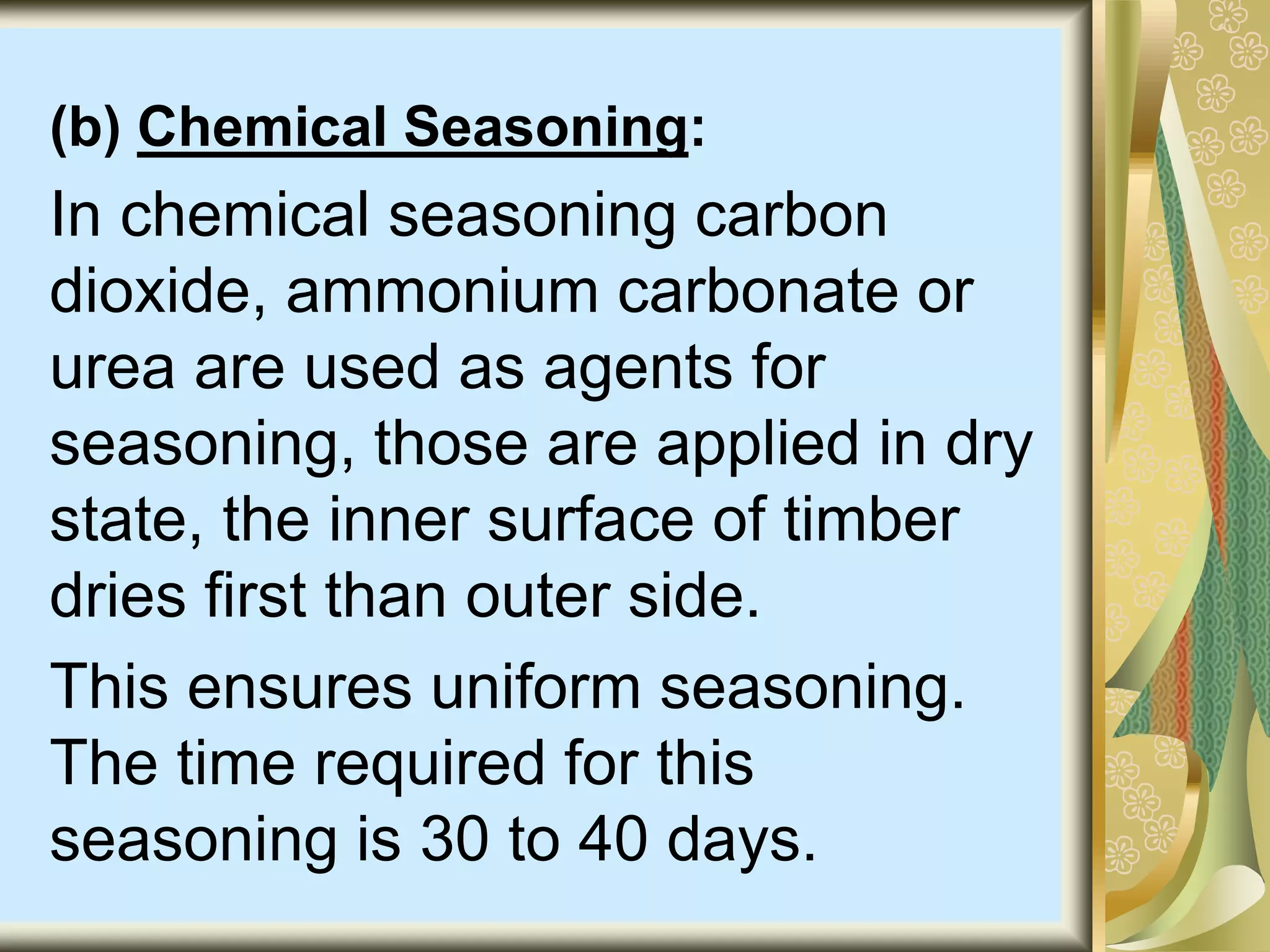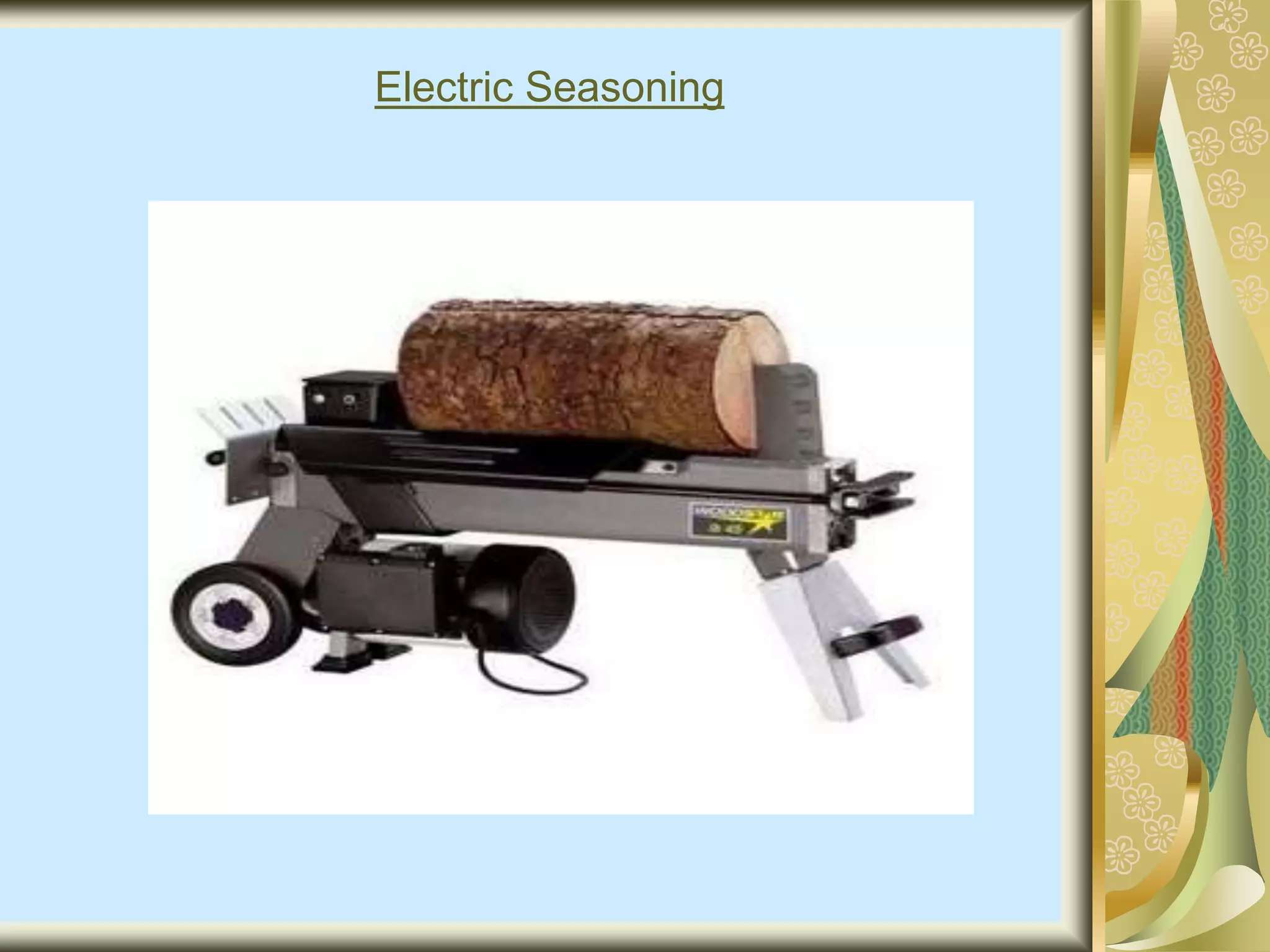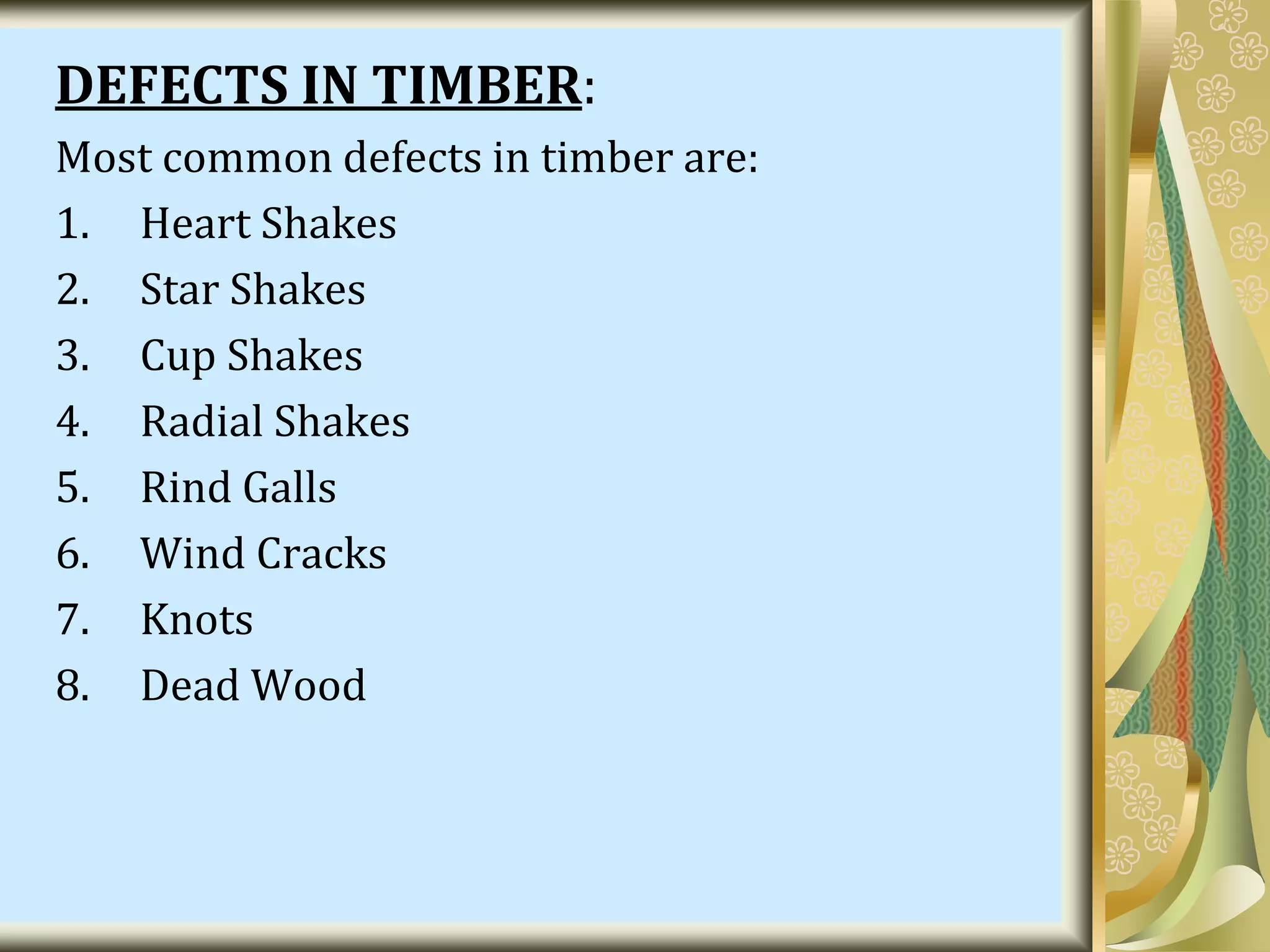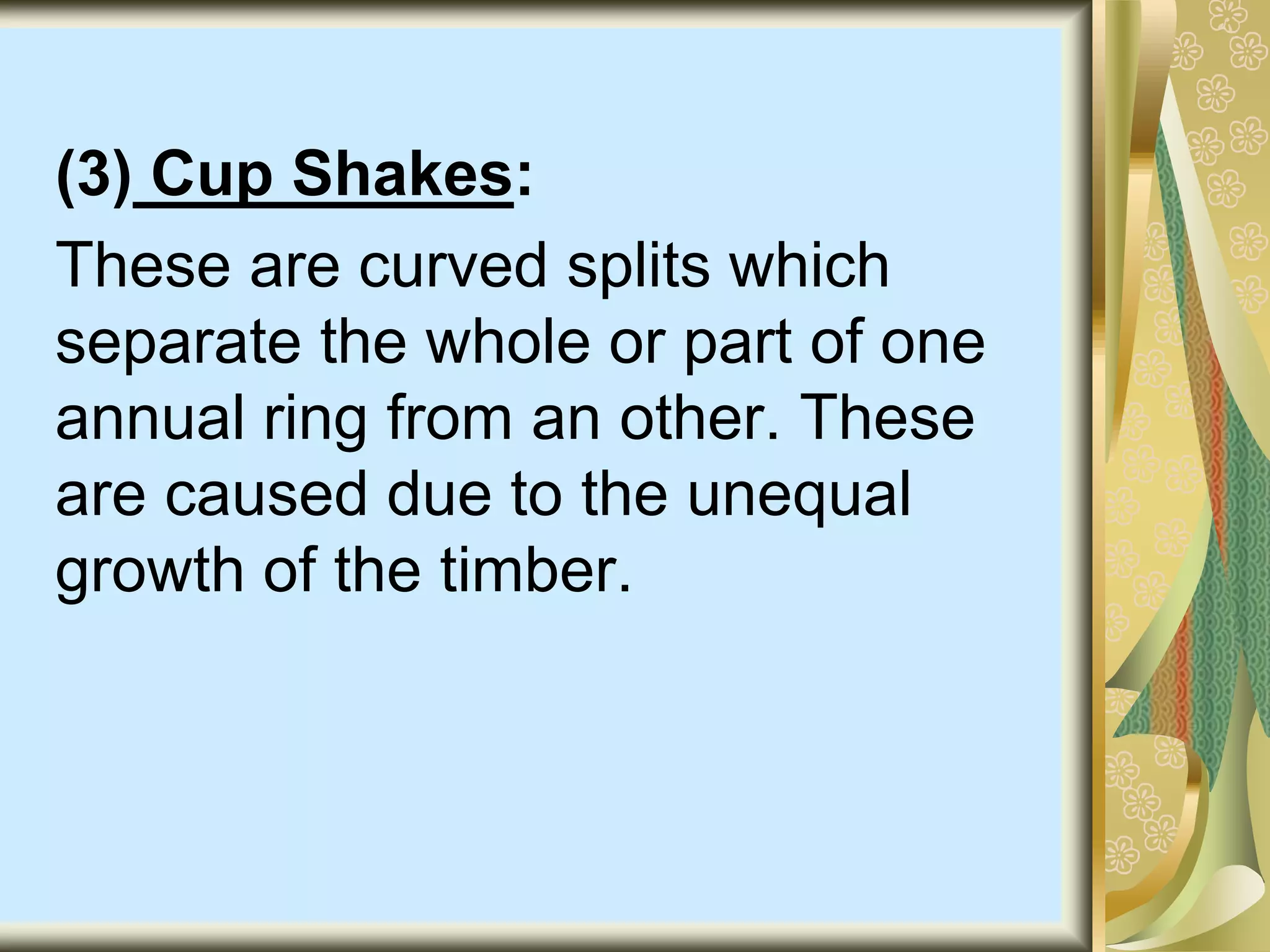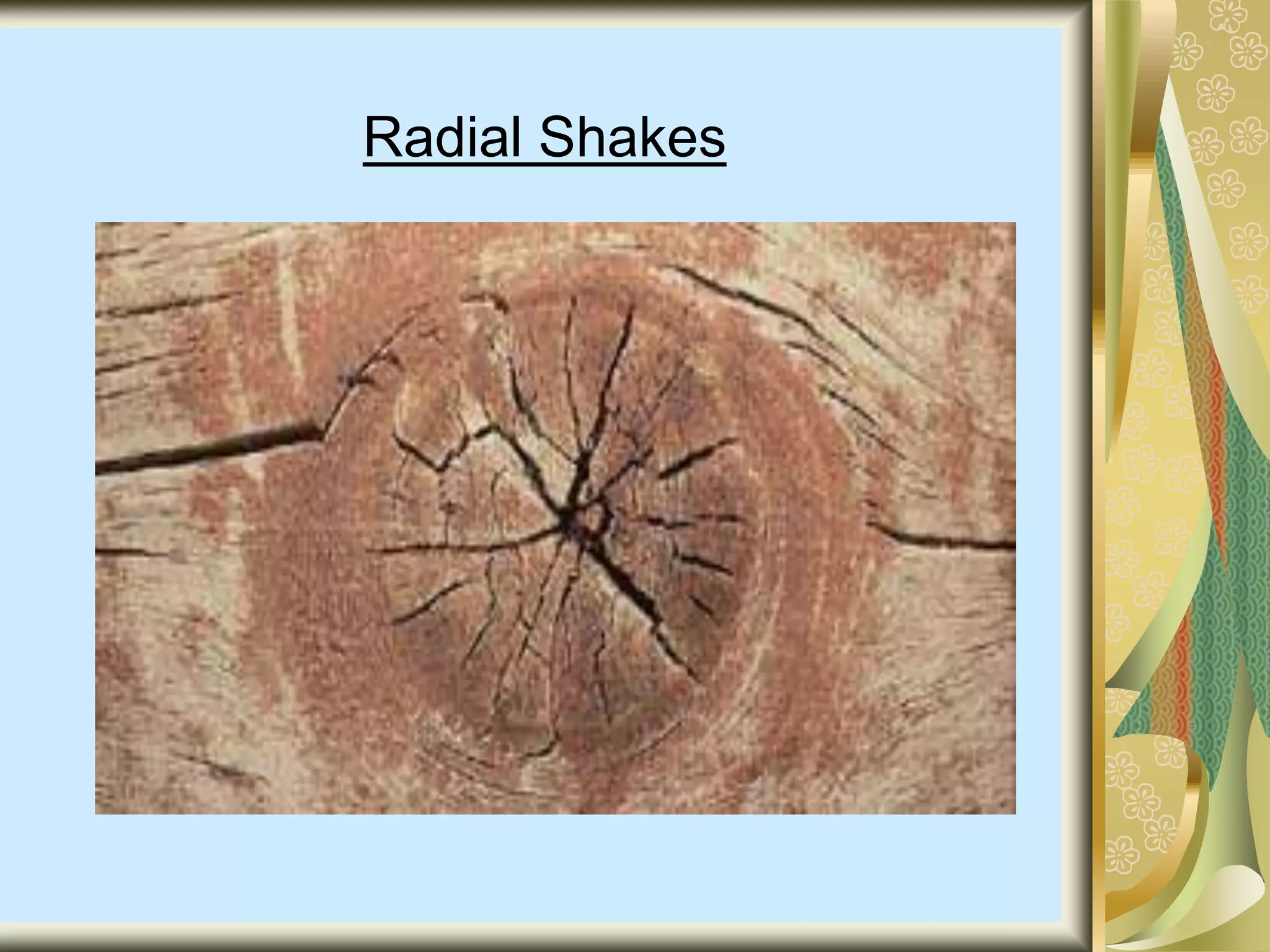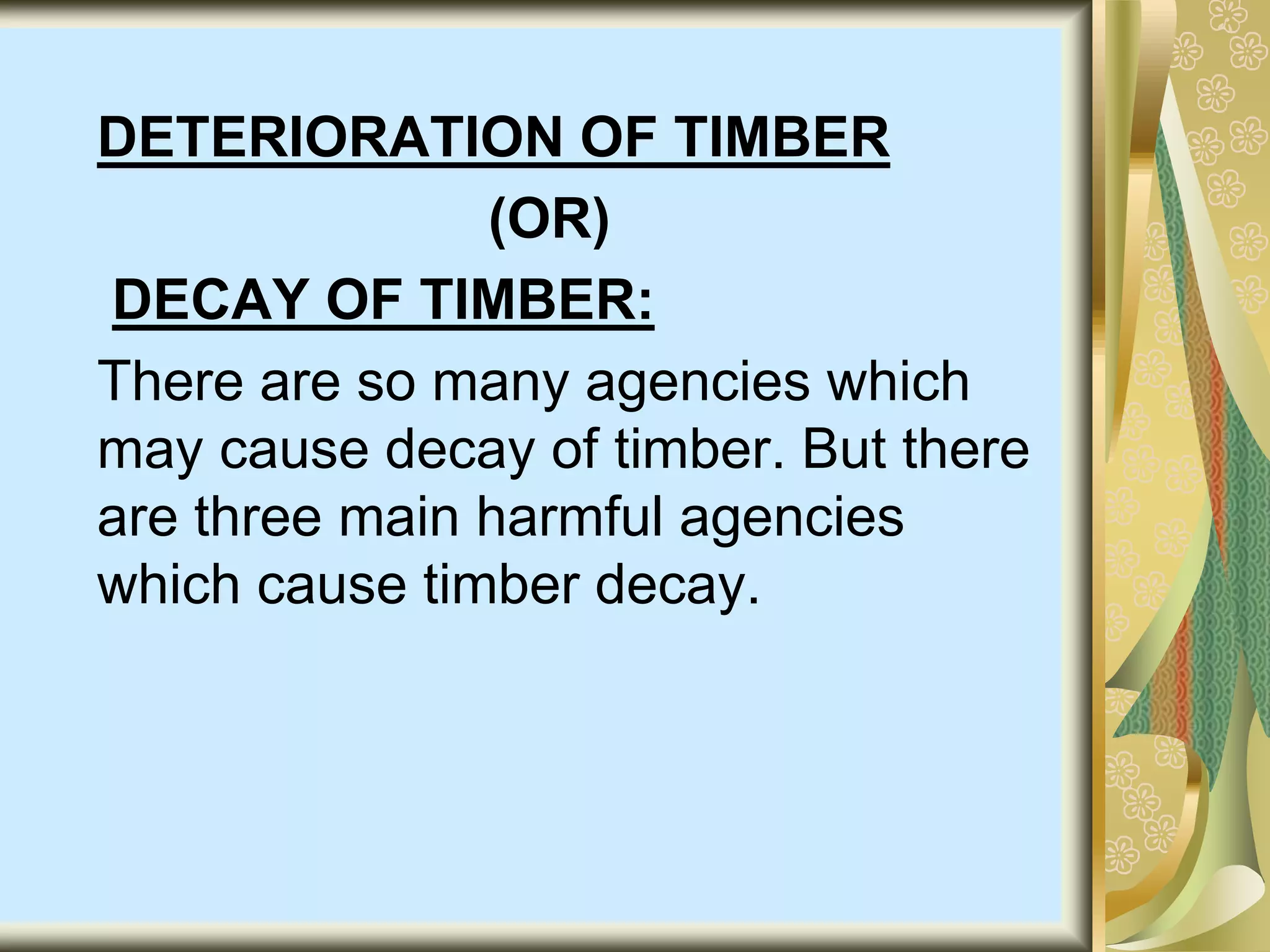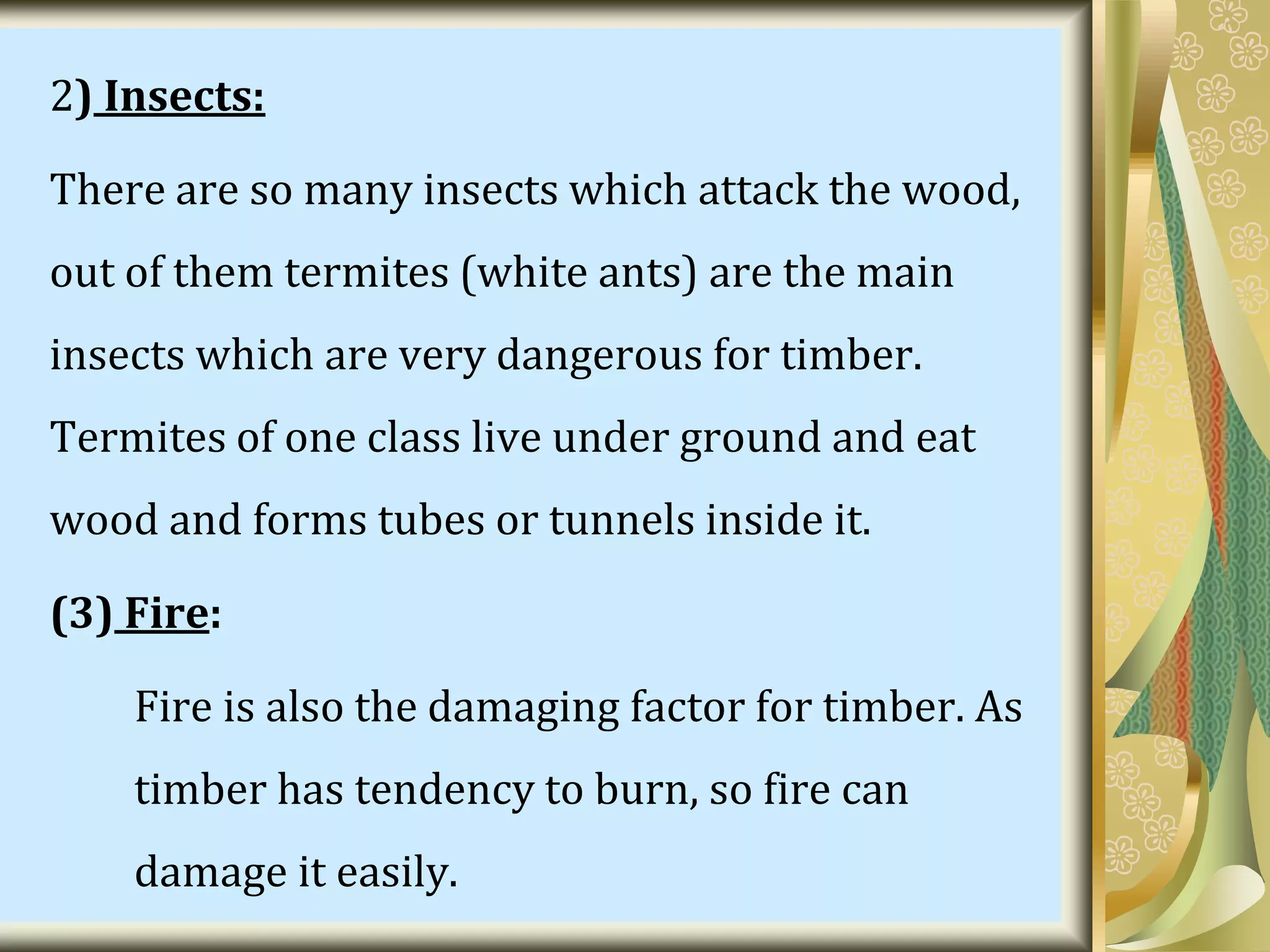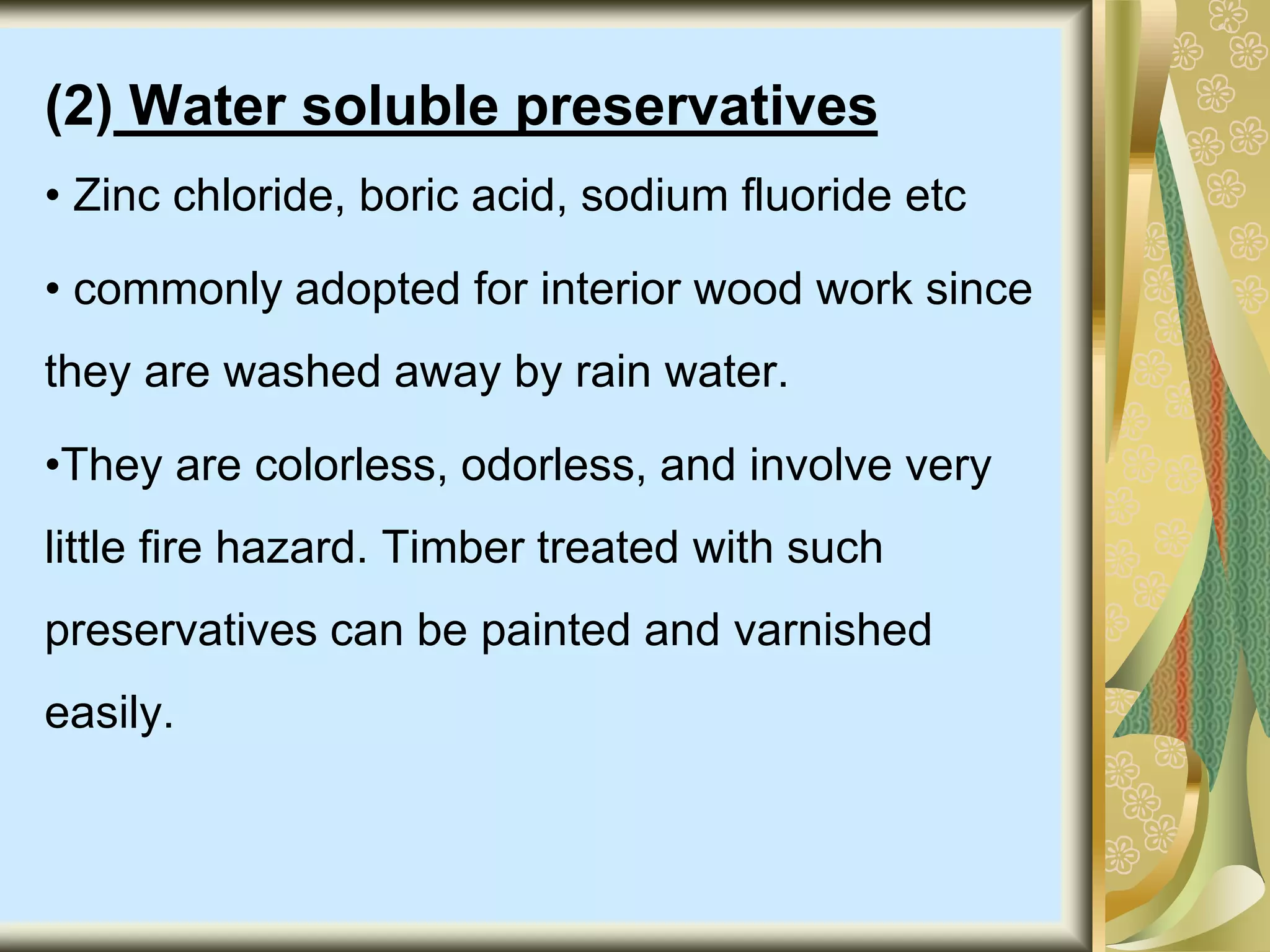This document discusses various topics related to timber and wood. It defines timber, wood, and lumber. It describes the structure of trees including bark, cambium, sapwood, and heartwood. It classifies trees as endogenous or exogenous and discusses different types of wood including conifers, deciduous trees, and examples. It also covers seasoning of timber, types of seasoning including natural, artificial, and water seasoning. Further, it discusses uses, defects, deterioration, preservation, and methods of applying preservatives to timber.




